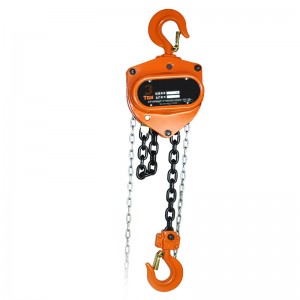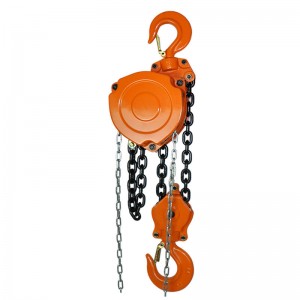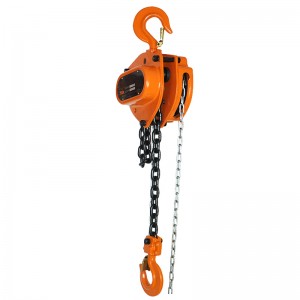A manual hoist, also known as a hand-operated hoist or a chain block, is a simple lifting device that is powered by human effort rather than electricity or other external power sources. It is commonly used in various industries and applications where small to medium loads need to be lifted or lowered.
The basic components of a manual hoist typically include a load chain, a hand chain, a lifting mechanism, and a set of gears. The load chain is made up of interconnected links that support the load being lifted. The hand chain is used to operate the hoist by pulling it through the lifting mechanism. The gears and other internal mechanisms within the hoist provide the mechanical advantage necessary to lift heavy loads with relatively low effort.
To use a manual hoist, you would typically attach the hoist to a secure anchor point or overhead structure using a suitable lifting point or hook. The load to be lifted is then attached to the hoist’s hook or lifting attachment. By pulling the hand chain, the operator can raise or lower the load as desired. Most manual hoists have a ratcheting mechanism that allows the load to be held securely in place once the hand chain is released.
It’s important to note that manual hoists have specific load ratings and capacity limits, which should not be exceeded. Overloading a manual hoist can lead to equipment failure or accidents. Therefore, it’s crucial to consult the manufacturer’s instructions and guidelines for the specific hoist you are using to ensure safe and proper operation.
Additionally, regular inspection and maintenance of the manual hoist are essential to keep it in good working condition and ensure its safe operation. Lubrication, checking for any signs of wear or damage, and following any maintenance procedures recommended by the manufacturer are important steps to take.
Always prioritize safety when using any lifting equipment, including manual hoists. If you are unsure about how to use a manual hoist or have concerns about a specific lifting task, it’s advisable to consult with a qualified professional or seek appropriate training before proceeding.
Post time: Aug-10-2023







